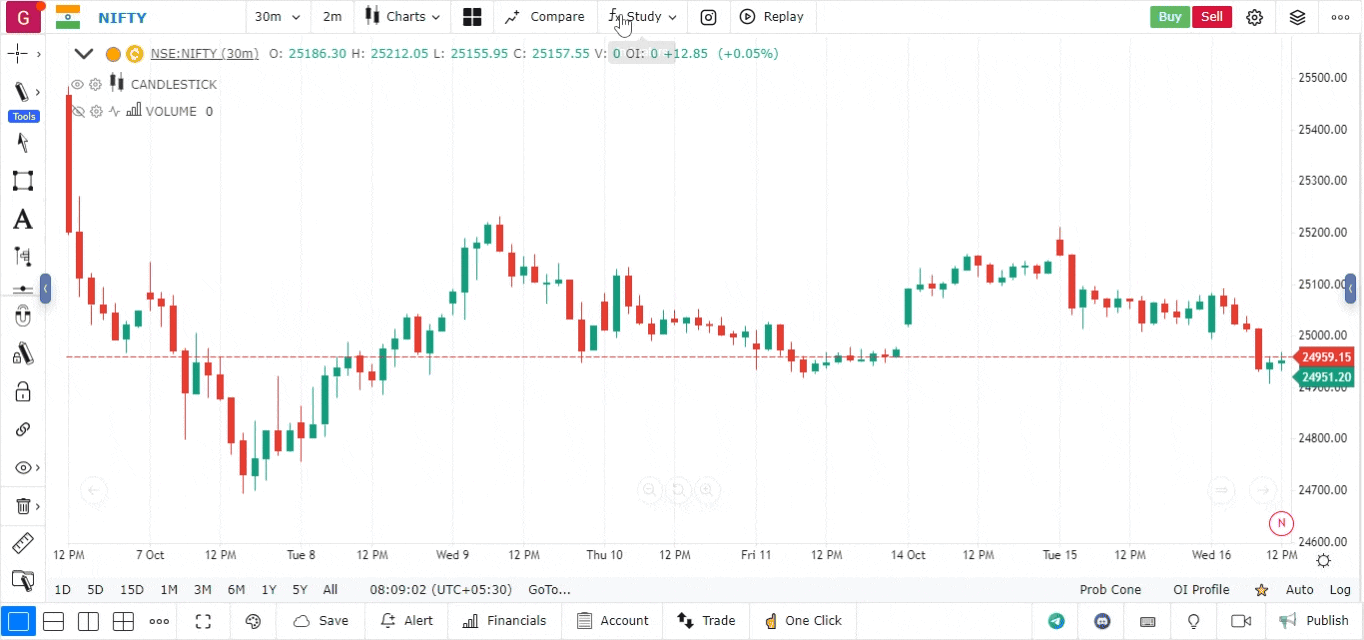Keltner Channel Overview
The Keltner Channel is a popular technical analysis indicator that is used to identify potential overbought or oversold conditions in the market, as well as to highlight trends and volatility. The Keltner Channel consists of a central Exponential Moving Average (EMA) surrounded by two bands that are typically set at a specified multiple of the Average True Range (ATR). You can easily implement the Keltner Channel to analyse price movements. Below is a detailed overview of the Keltner Channel and how to use it.
What is the Keltner Channel?
The Keltner Channel consists of three lines:
-
Central Line (EMA): This is the Exponential Moving Average (EMA) of the price over a specified period.
-
Upper Band: This is calculated by adding a multiple of the Average True Range (ATR) to the central EMA.
-
Lower Band: This is calculated by subtracting a multiple of the ATR from the central EMA.
Keltner Channel Formula
The Keltner Channel is calculated using the following formulas:
- Central Line (EMA):
- Upper Band:
- Lower Band:
Where:
- = The multiplier for the ATR (commonly set to 1.5 or 2)
- = Average True Range over a specified period
How to Add Keltner Channel
-
Open the platform:
- Navigate to the platform and select the asset you wish to analyse.
-
Add Keltner Channel Indicator:
- Click on the Indicators menu in the top toolbar.
- Search for “Keltner Channel” in the search bar.
- Click on the Keltner Channel indicator to add it to your chart.

- Configure Settings:
- You can customize the settings based on your trading strategy. Common settings include:
- Period for EMA: The number of periods for the Exponential Moving Average (e.g., 20).
- Multiplier for ATR: The value used to set the upper and lower bands (e.g., 1.5 or 2).
- ATR Period: The number of periods to use for calculating the Average True Range (e.g., 14).
- Colour and Line Style: Adjust the colours and styles of the lines for better visibility.
- You can customize the settings based on your trading strategy. Common settings include:
How to Interpret Keltner Channel
-
Trend Identification:
- When the price is above the upper band, it indicates a potential uptrend and that the market may be overbought.
- When the price is below the lower band, it suggests a potential downtrend and that the market may be oversold.
-
Buy and Sell Signals:
- Buy Signal: A buy signal may occur when the price pulls back to the middle EMA line and then bounces back up, indicating that the upward trend is likely to continue.
- Sell Signal: A sell signal can be generated when the price pulls back to the middle EMA line and then reverses downward, suggesting a potential downtrend.
-
Volatility Analysis:
- The distance between the upper and lower bands indicates market volatility. Wider bands suggest higher volatility, while narrower bands indicate lower volatility.